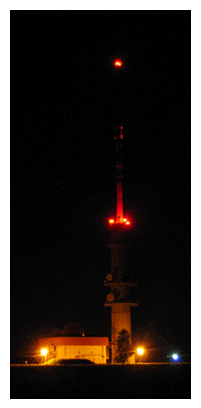|
 Welcome
to our site! Welcome
to our site!
Our
project was initiated as a cooperative U.S.-Hungarian
scientific effort to establish a long-term monitoring
site in Hungary. The main purpose of the project
was to obtain regionally representative carbon
dioxide mixing ratio and flux (NEE) data in Hungary.
The TV and radio transmitter tower (owned by Antenna
Hungária Corp.) is located in a flat region of
western
Hungary (46°57'21''N, 16°39'08''E), at an
altitude of 248 m above sea level, near a small
village called Hegyhátsál.
The tower is surrounded by agricultural fields
(mostly crops and fodder of annually changing
types) and forest patches.
Measurements of CO2
mixing ratio profiles,
temperature, humidity and wind profiles began
in September 1994. Flux
measurements began in April 1997. The tower
is also a NOAA ESRL global air sampling network
site (site code: HUN). Air is sampled once per
week using glass flasks and the samples are analyzed
at NOAA ESRL
Global Monitoring Division for CO2,
CH4, CO, H2, N2O
and SF6, and at the Institute for Arctic
and Alpine Research of the University of Colorado
for the stable isotopes of C and O in CO2
(*13C and *18O). In 1998,
the instrumentation was extended with a second
direct flux measuring system owned by AIST,
Japan (the former NIRE). To extend the vertical
mixing ratio measurements up to the top of the
planetary boundary layer occasionally air samples
were taken over the tower by means of a small
aircraft. During the 2006-2009 time period frequent in
situ airborne carbon dioxide mixing ratio
profiles were measured using gas analyzer made
by AOS, Inc. Gas chromatograph-based
measurements has been operational from 2006 to 2015 to monitor
the atmospheric mixing ratio of CH4,
CO, N2O and SF6.
Eddy covariance based monitoring of the vertical
flux of N2O was started in July, 2015. In situ CO, CH4 and N2O mixing ratio measurements
are also available at the tower site.
The
tower belongs to the developing European network
of tall tower sites which will monitor all important
greenhouse gases to support the Kyoto Protocol
and climate research with high precision, spatially
representative data.
Please visit the Measurements
section of the website for more details.
Near
real-time CO2 mixing ratio data
is available at the website.
|